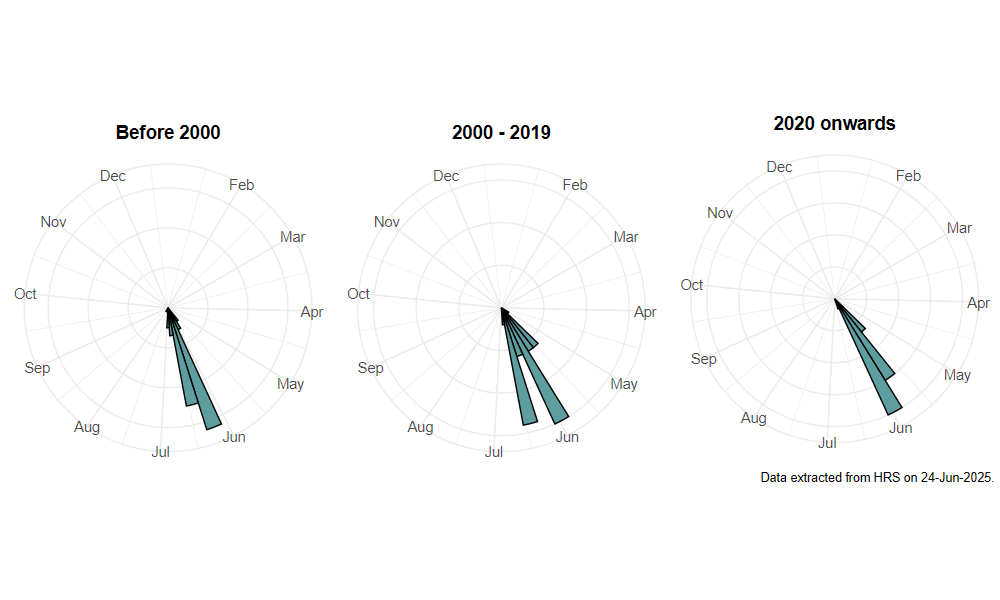Doros profuges (Harris, 1780)
Identification
Identification difficulty = 2. ![]()
![]() according to Ball & Morris, 20241
according to Ball & Morris, 20241
Synonymy
Doros conopseus (Fabricius) in Stubbs & Falk (1983)2.
Biology
Despite extensive survey as part of the Biodiversity Action Plan (Plant, 2000)3, the ecology of this elusive hoverfly remains enigmatic. There is a single report of a female observed low down on an Ash Fraxinus excelsior trunk, possibly ovipositing. The larva has been reported from turf (continental record) and the puparium has been described. There is a suggested association with the black ant Lasius fuliginosus, but this has not been proven. The larva may develop on root aphids in ant nests. Adults may visit flowers for nectar and many reports mention bramble Rubus, with adults either sunning themselves on the leaves or visiting the flowers.
Flight period
The following plots show the number of unique records per week excluding those reported to be of immature stages.

Status
Lower Risk (Near Threatened) - Ball & Morris, 20144. Vulnerable (RDB2) - Falk, 19915 and Shirt, 19876.
Distribution
In recent years there appear to be several well established colonies on the western Chalk rim of the Weald, on the North Downs of Surrey, the South Downs of West Sussex, the Hampshire fringe, and on limestone around Morecambe Bay. There are also scattered records elsewhere. In Scotland it has been recorded on Arran and at a coastal site on Mull. Seems to have been recorded more frequently since 2000, but isolated records seem to crop up in areas where it is not then seen again. There was a rather strange, confirmed record of an individual landing on a boat some miles off the south coast of England, which suggests that adults may be quite mobile!

Trends
The following plots show the Frescalo TFactor vs year and a map of the rescaled frequency (all records) for the species.
-
Ball, S., & Morris, R. (2024). Hoverflies of Britain and Ireland. WILDGuides (3rd ed.). Oxford: Princeton University Press. ↩
-
Stubbs, A., & Falk, S. (1983). British Hoverflies: An Illustrated Identification Guide (1st ed.). Reading: BENHS. ↩
-
Plant, C. (2000). The wasp hoverfly Doros profuges (Harris) Report of the 1999 survey ( No. 352). English Nature Research Reports. Peterborough: English Nature. ↩
-
Ball, S., & Morris, R. (2014). A review of the scarce and threatened flies of Great Britain. Part 6: Syrphidae. ( No. 9). Species status (pp. 1–130). Peterborough: JNCC. ↩
-
Falk, S. (1991). A review of the scarce and threatened flies of Great Britain. ( No. 39). Research and Survey in Nature Conservation (pp. 1–194). Peterborough: NCC. ↩
-
Shirt, D. (Ed.). (1987). Red Data Books: 2. Insects. Peterborough: NCC. ↩